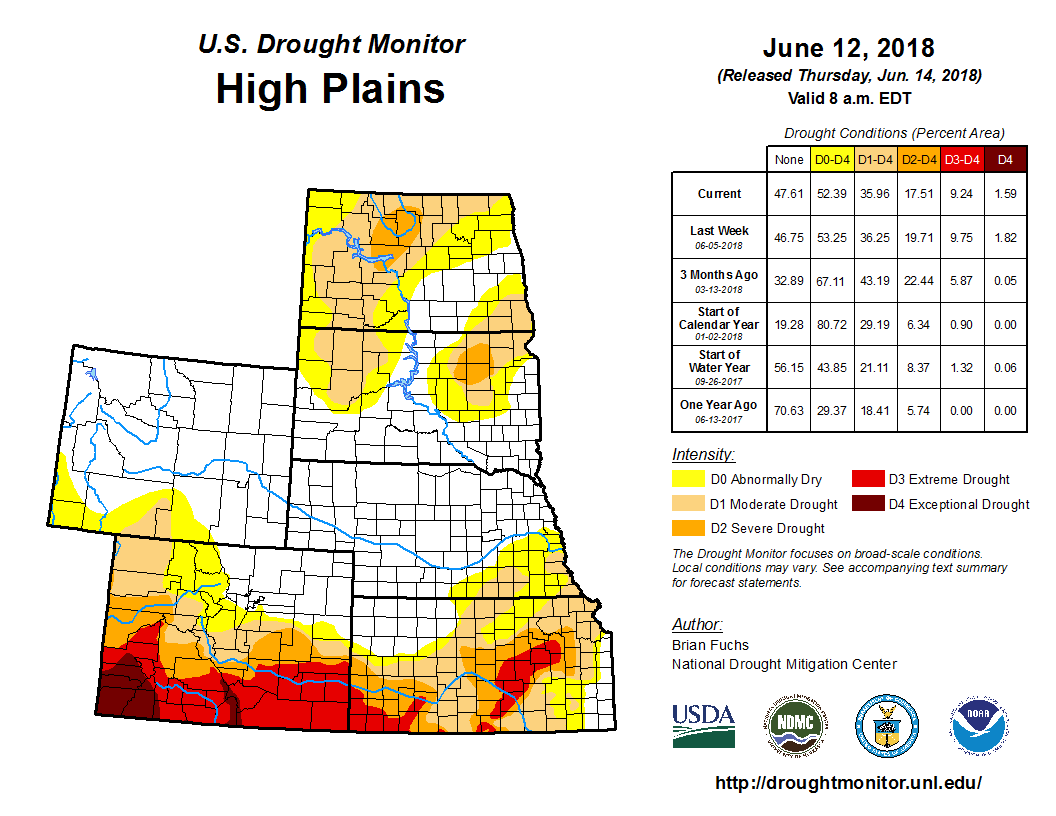Dry conditions continue in Southwest; parts of High Plains region receive significant rainfall

According to the U.S. Drought Monitor for June 12 released June 14, over the last week, dry conditions continued in the Desert Southwest and in parts of the Central Rockies, leading to drought persistence and degradation in these areas. Farther east across the Great Plains, scattered thunderstorms led to some areas improving or staying out of drought, while some areas that missed the rain were degraded. In the Upper Midwest and Northern Plains, precipitation patterns also dictated areas which experienced degrading and improving conditions. Near normal or wetter than normal conditions occurred over most of the eastern United States, where few changes to the USDM depiction were made.
Significant rainfall fell in parts of the High Plains region, while most of the mountainous areas remained dry. Thunderstorms in northeast Colorado, Nebraska, and northwest and eastern Kansas delivered between 0.5 and 3 inches of rain, helping to prevent additional drying caused by the high temperatures. Similar rainfall totals in southwest Kansas were enough to lessen precipitation deficits and result in an improvement from extreme to severe drought. Aside from the Black Hills, much of the Dakotas saw rainfall amounts over a half inch, with some areas exceeding 2 inches. This rainfall led to the removal of abnormal dryness in some areas west of the Missouri River in South Dakota and far southern North Dakota. Recent rainfall also helped decrease moderate drought in northwest South Dakota, though if recent hot weather and a high atmospheric demand for moisture continues, a reversion back to moderate drought conditions may occur. Severe drought was reduced in coverage in north-central North Dakota, where precipitation deficits over multiple time scales had decreased sufficiently for an improvement. Meanwhile, over the central Rockies, continued warm, dry weather exacerbated longer term precipitation deficits leading to an expansion of drought and abnormal dryness in north-central Colorado and south-central Wyoming.



